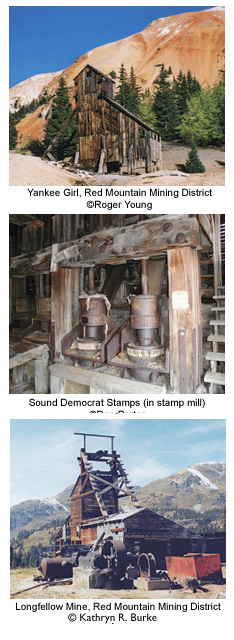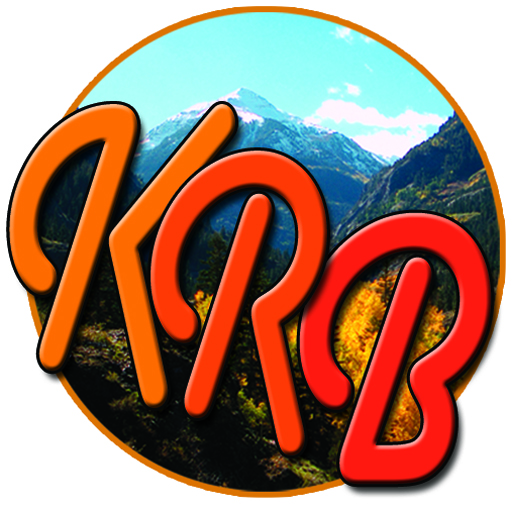San Juan Mountains—Mining & NG RR History
Alpine Loop: Ouray, Silverton, Lake City
Red Mountain Mining District
History of Ouray

 San Juan Mountains Mining & NG RR History
San Juan Mountains Mining & NG RR History
[July 21, 2021. By Kathryn R. Burke] The event is part of a series presented about the region’s colorful history: History Wednesdays at Montrose Center for the Arts (MCA). Produced by Kate Burke, these Wednesday afternoon programs are a joint effort of Kate and subject-related local and regional historical associations and museums.
Learn the story of the San Juan Mountains mining district and the narrow gauge railroads that served it. Presented by Gail Saunders, archivist for the Ouray County Historical Society, and Kathryn R. Burke, publisher of regional books and magazines, share stories, video, and vintage photographs of the old mining towns and districts of the San Juan Mountains, including Ouray, Silverton, Lake City, and by connecting mine tunnels, Telluride. Known as the Red Mountain Mining District, and named after the iron ore (pyrite, or “fool’s gold”) that gives the mountains their distinctive color, the area was one of the richest (and busiest) mining districts in the world in the late 1800s. Boom towns, like Ouray and Silverton, sprang up quickly, connected by rugged (nearly impassable) wagon roads and mule trails. And it was silver, not gold, that fueled the frenzy,
The stories of the era are fascinating, nearly impossible for us to conceive today. Equipment for mines and boarding houses was dragged up those trails to the mines, by mules—an amazing feat, and one that did not require a lengthy transportation permitting process. The mines needed men, supplies, and equipment—and got it lickety split. The towns needed bars and brothels, churches and schools—and all were built in a heartbeat and without a certificate of occupancy. Mining houses had great food and entertainment. The little towns had post offices, courthouses, restaurants, and hotels. The region was booming.
Before long, enterprising entrepreneurs began building railroads to haul ore out for processing and men in to mine and process it. Most were built by Otto Mears, also known as the Pathfinder of the San Juans, who also built the toll roads that linked the San Juan Mountain towns.
Because of the steep mountain passes and canyons between towns and mines, the railways (and trains that rode on them) were narrow gauge (about half the width of standard gauge). The little steam-powered locomotives that pulled the trains were lighter and more cost effective.
The steepest grades were between Silverton north to Ouray. The “Silverton Railroad only made it as far as as the Corkscrew Turntable. At one time, four different railroads served Animas Forks, above Silverton, at over 11,000 feet.
Contact me for a presentation on the Red Mountain Mining District, mining and narrow gauge railroads in the San Juans,

 ©Kathryn R. Burke
©Kathryn R. Burke